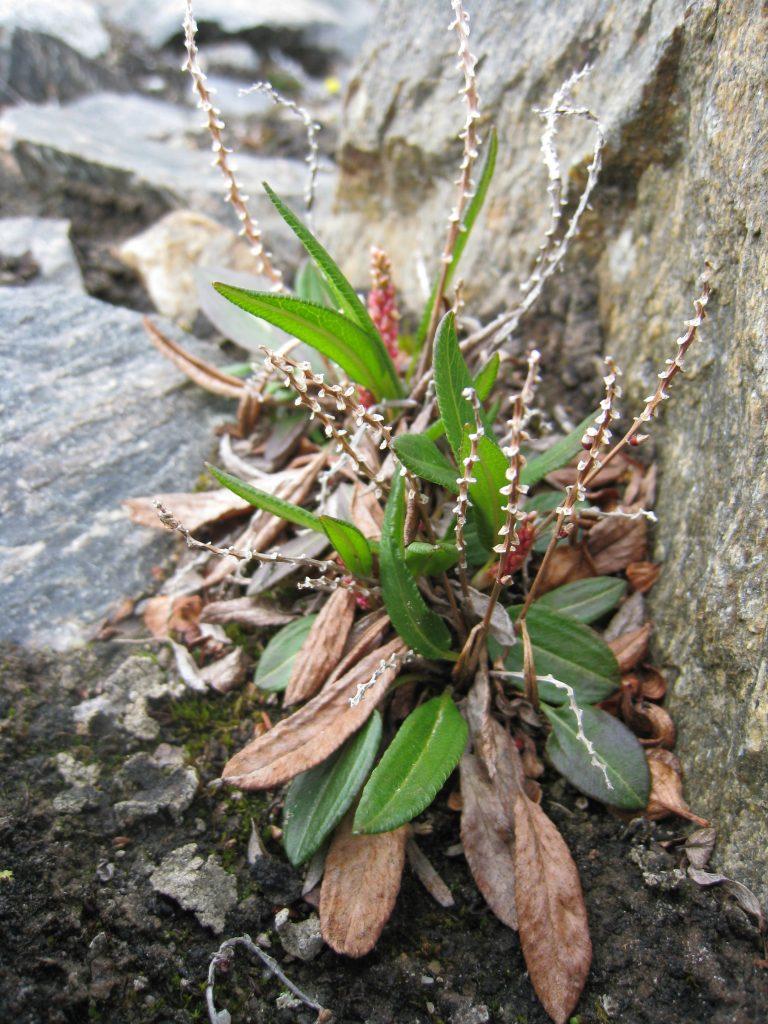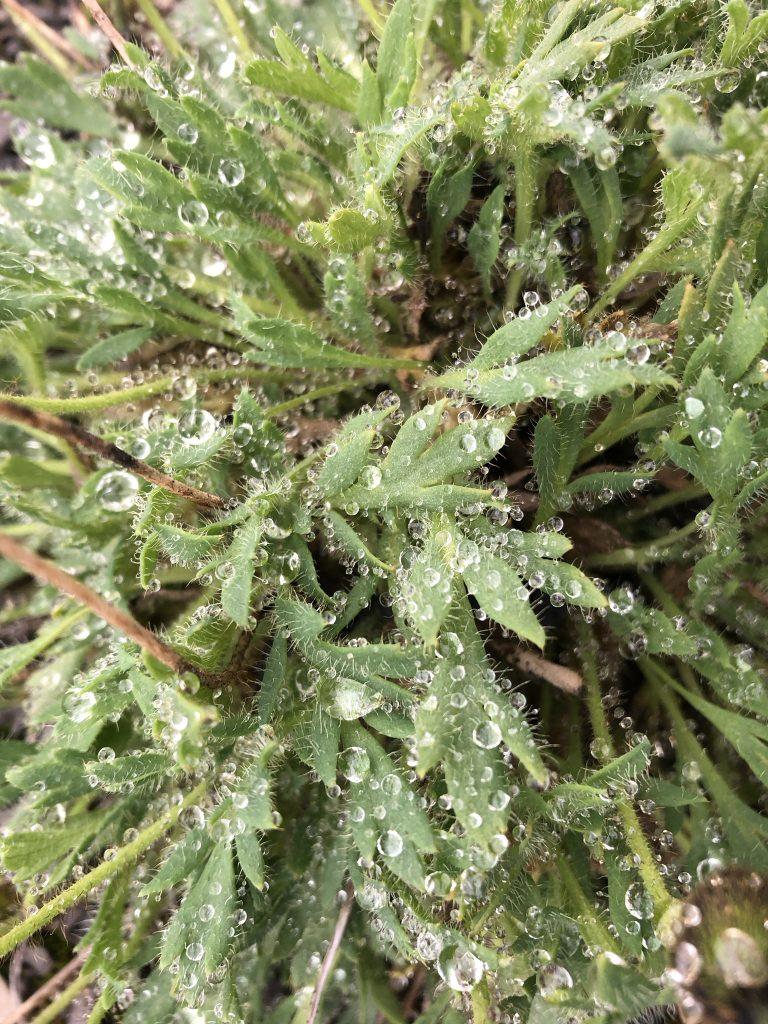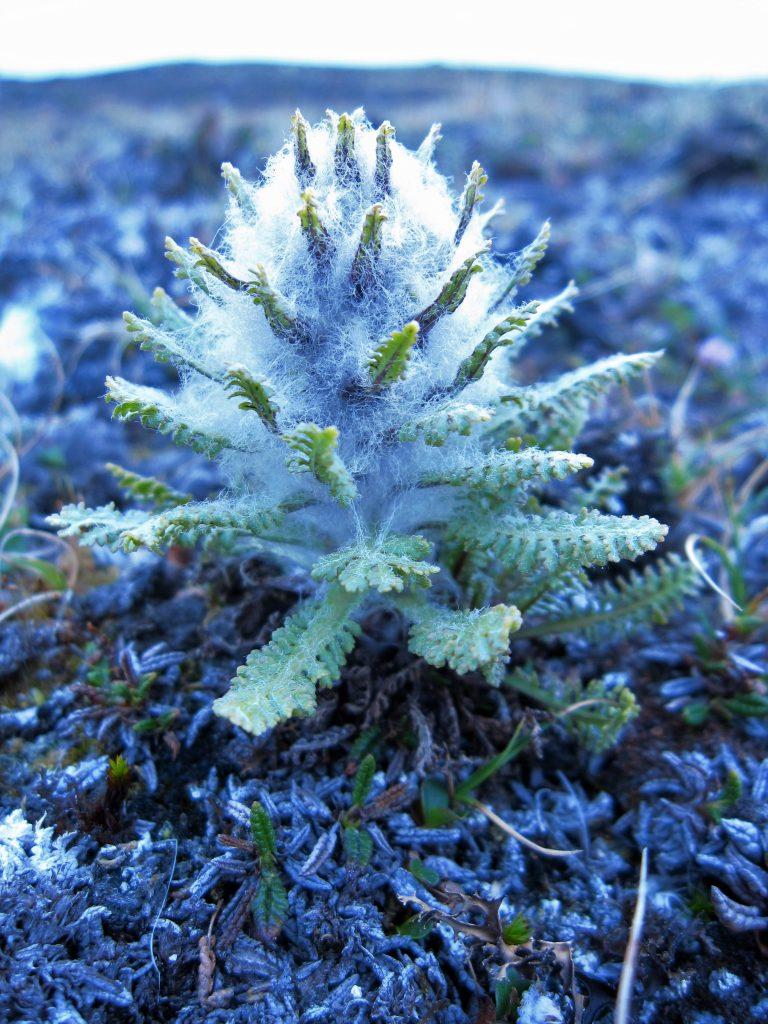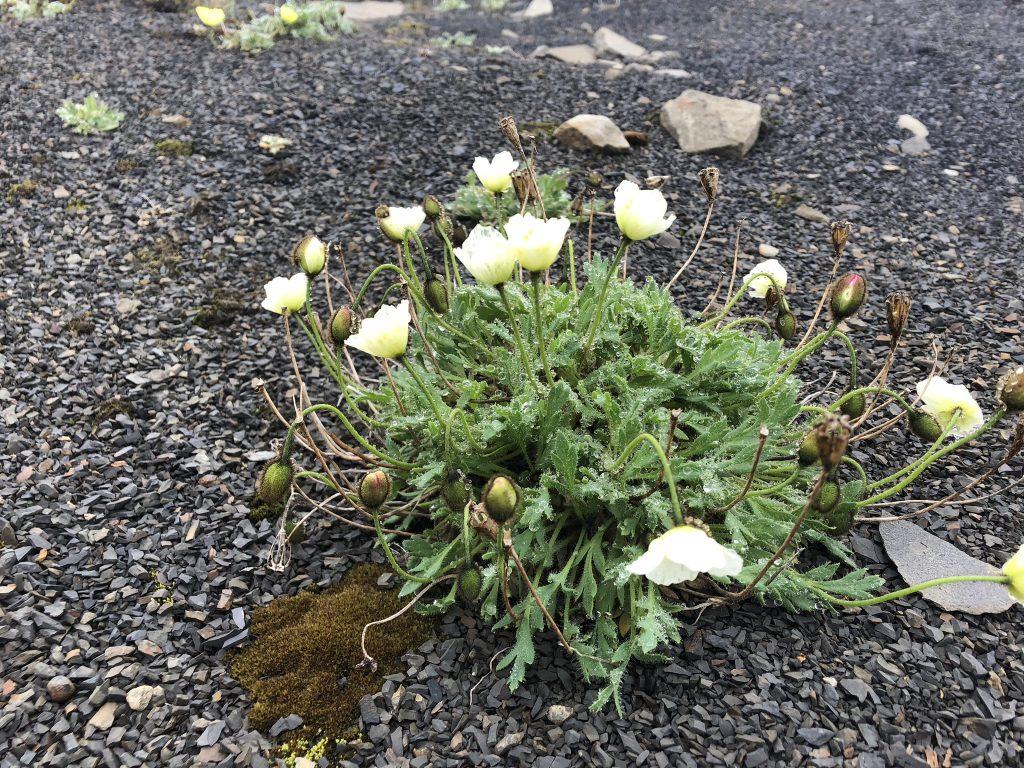Arctic plants must deal with a range of different challenges. Low temperatures year around slows down metabolic processes and increase the risk of frost damage. Low temperatures will also affect decomposition rates, resulting in low nutrient availability in the soil. The low sun angle results in low light intensity that affects photosynthesis. Low levels of precipitation (that mainly falls as snow) may result in water stress. Strong winds increase the risk of abrasion and desiccation. On top of this, the arctic growing season is very short. To meet these challenges, arctic plants have developed a range of morphological and physiological adaptations, and evolved life histories that enable life at the margin (Bliss, 1962, Crawford, 2014).
Winter survival – physiological and morphological adaptations
Perennial plants living in seasonal environments with winter must prepare for a longer period with freezing temperatures. This acclimation process is called cold hardening. In arctic plants, this acclimation is often triggered by light quality (reduced red/far-red ratio as the sun angle decreases) and temperature. This trigger physiological and biochemical changes in the plant that result in greater cold tolerance. Plants actively reduce water content within cells, produce various proteins that inhibit ice formation within cells, and ensure that ice segregates into specific areas of the plant tissue where it will not harm. Plants also produce protective compounds to withstand the dehydrative stress associated with the formation and presence of that ice. The levels of unsaturated phospholipids in membranes are increased to maintain fluidity (Körner, 2003, Körner, 2016).
Various morphological adaptations also protect living meristem from low temperatures, abrasion, and desiccation during winter. Compact growth forms such as tussocks, rosettes and cushions create a protective environment within the structure, whereas prostrate growth forms are less exposed to wind.
The placement of surviving buds and living meristem in arctic plants are near or below ground, being chamaephytes (buds on persistent shoots near the ground), hemicryptophytes (buds at or near the soil surface), or cryptophytes (below ground, resting buds lying beneath the surface as a rhizome, bulb, corm, etc.) according to the the Raunkiær system of plant growth forms. Thus, most arctic plants are covered in snow during winter. The snow cover protects against strong winds, and deep snow is also highly insulating. Species in snow-bed habitats may only experience winter temperatures around zero degrees (Rixen et al., 2022). Thus, in alpine and arctic landscapes, the level of freezing resistance usually follows the topography-controlled snow distribution patterns (Körner, 2016).
Summer survival – physiological and morphological adaptations
Winter hardening is not unique for arctic plants, but tolerating frost during summer is not for everyone. Arctic plants have a higher tolerance to summer frost and an improved ability to super cool. A freezing experiment simulating an early summer freezing for twelve species restricted to favourable sites (bioclimatic subzone C) in Svalbard suggested that -7°C is a critical temperature for many arctic taxa (Alsos et al., 2007).
Metabolic processes are slower in lower temperatures. To compensate for this, arctic plants usually have a higher number of mitochondria per cell and higher oxidative capacity per mitochondrion. Thus, arctic plants will have higher respiration rates than e.g. temperate plants IF compared under the same high temperature, but the rates will be similar if the plants are compared in situ (arctic plant measured under arctic conditions versus temperate plant under temperate conditions) (Körner, 2016).
Photosynthesis in the Arctic is in general not limited by low temperatures but light intensity. The long arctic photoperiod can however compensate for low light intensity. Under comparable light conditions, arctic plants have photosynthetic rates similar to temperate species but achieved at lower air temperatures. This is partly due to e.g. morphological adaptations improving the plant microclimate, which is largely decoupled from air temperatures measured 2 m above ground (Körner, 2016). The temperature in dense mats close to the ground, rosettes, and cushions can be more than 10 degrees warmer than the measured air temperature (link film). Keeping old leaves and stems also improve plant microclimate in summer by breaking the wind and creating insulating pockets of trapped air. Pubescence (hairiness) will also aid microclimatic conditions.
Heliotropism (flowers that follow the sun) and parabolic-shaped flowers are common adaptations that increase the temperature of the focal point of flowers, and aid both pollination (warm flowers attract insects) and ripening of seeds (Kjellberg et al., 1982). Dark pigmentation can also be beneficial, as dark colours absorb more heat. It is shown that e.g. yellow flowered Papaver is warmer than white flowered Papaver (Mølgaard, 1989).
Several arctic plants have shown very high anoxia tolerance (Crawford et al., 1994). This can be beneficial, e.g. during snowmelt when permafrost prevents drainage and the soil may be waterlogged for long periods. There is also a risk of ice-encasement during winter, particular after so-called rain-on-snow-events. Anoxia leads to the production of free radicals. Anoxia tolerance in these arctic plants is probably related to the production of certain antioxidants, but the mechanism behind is not fully understood.
After snowmelt, however, many arctic plants experience drought and water deficit. Leaf morphology that reduces water loss is therefore common, such as small, thick, needle-like leaves with thick cuticle. Growth forms such as cushions, also trap moisture and reduce evaporation.
Extensive root systems are common, and living meristems are protected by old leaves in a dry, windy arctic steppe area. Potentilla pulchella that have been digged out of the sand to the left, Deschampsia alpina to the right
Photo: Pernille Bronken Eidesen
In general, arctic plants are long-lived perennials, which allocate more biomass below ground than above ground. Thus, large root systems are common, which enhance the search for both water and nutrients and enable storage between seasons. Most species also extend their root system even further through mycorrhizal associations (Botnen et al., 2020). Efficient resorption and recycling of nutrients are important, and many arctic plants reduce nutrient loss by being evergreens or wintergreens, having tissues with long lifespans (Aerts, 1995). Below-ground storage of resources and being evergreen also provide a “flying start” in spring, which is important when the growing season is short.
Life forms after Raunkiaer (1907): 1: Phanerophyte; 2+3: Chamaephyte; 4: Hemicryptophyte; 5+6: Geophyte; 7: Helophyte; 8+9: Hydrophyte. Therophyte and epiphyte are not shown. In the Arctic, the living meristem is placed near or below ground, lifeforms 1, 7, 8, and 9 are absent.
Source: https://en.wikipedia.org/wiki/Raunki%C3%A6r_plant_life-form. License Creative commons
To track the sun - over a season and over a day
In this time-laps video you can watch how Silene acaulis start flowering on the south side, where it accumulates most heath first, and one month later the last flower appear on the north side. Temperature loggers show that there is a great difference between soil and cushion temperature. On a sunny day, the cushion temperature reach above 30 °C. A time laps of how Papaver dahlianum track the sun over a day by heliotropism is also included.
Photo: Pernille Bronken Eidesen
- Aerts R (1995) The advantages of being evergreen. Trends in Ecology & Evolution 10: 402-407.
- Alsos IG, Körner C, Murray DF & students A- (2007) Arctic plant ecology: From tundra to polar desert in Svalbard. p.^pp. The University Centre in Svalbard, https://bibsys-yb.alma.exlibrisgroup.com/view/delivery/47BIBSYS_UNIS/128349780002259.
- Bliss LC (1962) Adaptations of Arctic and Alpine Plants to Environmental Conditions. Arctic 15: 117-144.
- Botnen SS, Thoen E, Eidesen PB, Krabberød AK & Kauserud H (2020) Community composition of arctic root-associated fungi mirrors host plant phylogeny. FEMS microbiology ecology 96: fiaa185.
- Crawford RMM (2014) Chap 7 Plant survival in cold habitats. Tundra-Taiga Biology: Human, Plant, and Animal Survival in the Arctic,p.^pp. 147-163. Oxford University Press.
- Crawford RMM, Chapman HM & Hodge H (1994) Anoxia Tolerance in High Arctic Vegetation. Arctic and Alpine Research 26: 308-312.
- Kjellberg B, Staffan K & Kerstensson I (1982) Effects of Heliotropic Movements of Flowers of Dryas octopetala L. on Gynoecium Temperature and Seed Development. Oecologia 54: 10-13.
- Körner C (2003) Alpine plant life : functional plant ecology of high mountain ecosystems. Springer, Berlin.
- Körner C (2016) Plant adaptation to cold climates. F1000Research 5: F1000 Faculty Rev-2769.
- Mølgaard P (1989) Temperature Relations of Yellow and White Flowered Papaver radicatum in North Greenland. Arctic and Alpine Research 21: 83-90.
- Rixen C, Høye TT, Macek P, et al. (2022) Winters are changing: snow effects on Arctic and alpine tundra ecosystems. Arctic Science 0: 1-37.
















